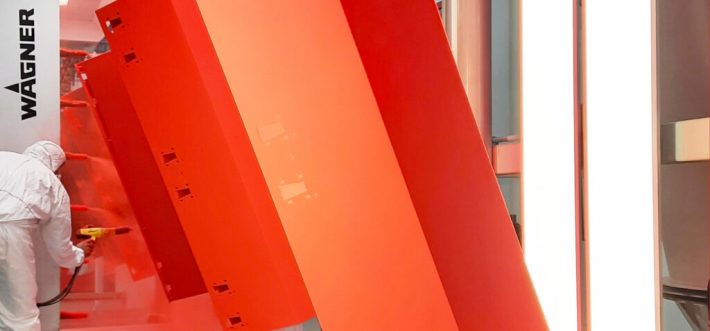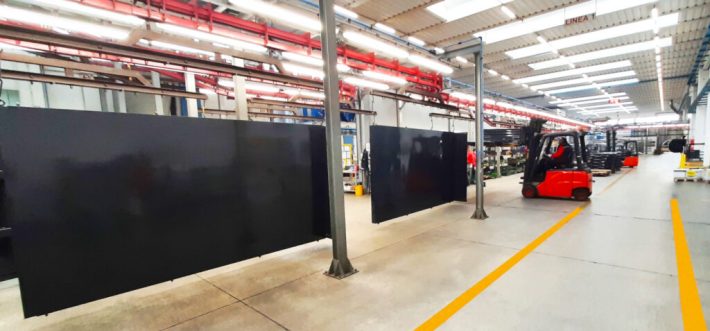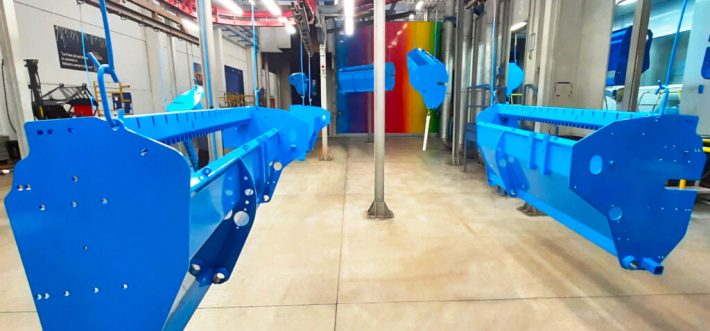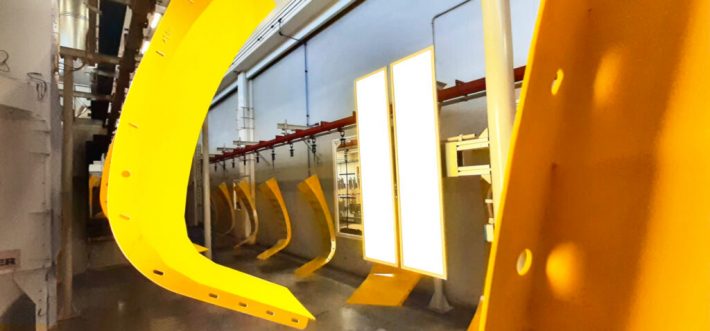Over the years, powder coating has conquered the world and established itself as a quality standard in many industrial coating applications. Let’s take a look at its history, from its origins in Germany in the late 1940s to the present day.
In the industrial field, powder coating is now part of the collective imagination, having been the most widespread practice for many years and which guarantees the best relationship between quality of workmanship and final price.
Furthermore, technological evolution has allowed the creation of special automated booths for powder coating, making it possible to standardize the procedures for its use, sometimes assisted by the work of man in the finishing of the most particular details.

Compared to liquid painting, powder coatings do not contain solvents and are applied to the articles by means of specially designed electrostatic guns; the powders are affixed to the surfaces to be treated and subsequently, upon entering the oven, the paint polymerizes, settling permanently, turning into a permanent layer.
But how did we get here?

The history of powder coating began a long time ago, in Germany in the late 1940s and early 1950s: environmental concerns about the solvent contamination of liquid coatings were beginning to arouse concern, and people began to evaluate more sustainable alternatives to this well-established practice.
Initially, the poor were flame-sprayed onto metal surfaces, but in 1954, a patent was filed that would revolutionize the industry: German scientist Erwin Gemmer developed the fluidised bed method for processing thermosetting powder coatings. This was a major step forward, compared to flame spraying, and was capable of significantly improving the quality of processing.
Starting in Europe, the new method conquered the world. Until the mid-1960s, the method developed by Dr. Gemmer was the most widely used powder coating method, whose applications were as much about aesthetics as about functionality, e.g. for corrosion- and abrasion-resistant surfaces.

Given the excellent results achieved by powder coating, new methods were tested to raise the bar of quality and usability even higher: it was between 1962 and 1964 that electrostatic processing of powder coating appeared on the market in the United States, applied using spray guns, and soon after exported to the rest of the world. The application was extremely familiar as it closely resembled the existing use of liquid paint guns. Its ease of use and convenience made it a success.
What was still missing was a kind of “standardization” of thermosetting resins, a way of codifying exactly which raw material to use: between the mid-1960s and 1970s, the four main types of thermosetting resins were established: epoxy, epoxy-polyester hybrid, polyurethane and polyester. This allowed powder coatings to be used in more widespread commercial settings, and the process took off.

The rest is more recent history: between the 1970s and 1980s, powder coating became extremely popular throughout North America, Europe and Japan, with the world’s major industries realizing its potential.
Nowadays, improvements in application equipment have led to greater transfer efficiency, reduced waste and lower overall costs. The recycling and reuse of unused powders also allows for greater environmental sustainability.
In addition, as mentioned above, the introduction of advanced automatic booths means that the process can be standardized, making it perfectly assimilable into a modernly structured assembly line, so that its operational potential and overall costs can be accurately predicted.
(In the video, the powder coating phase performed inside one of our automatic booths, with the support of a specialized operator.)

